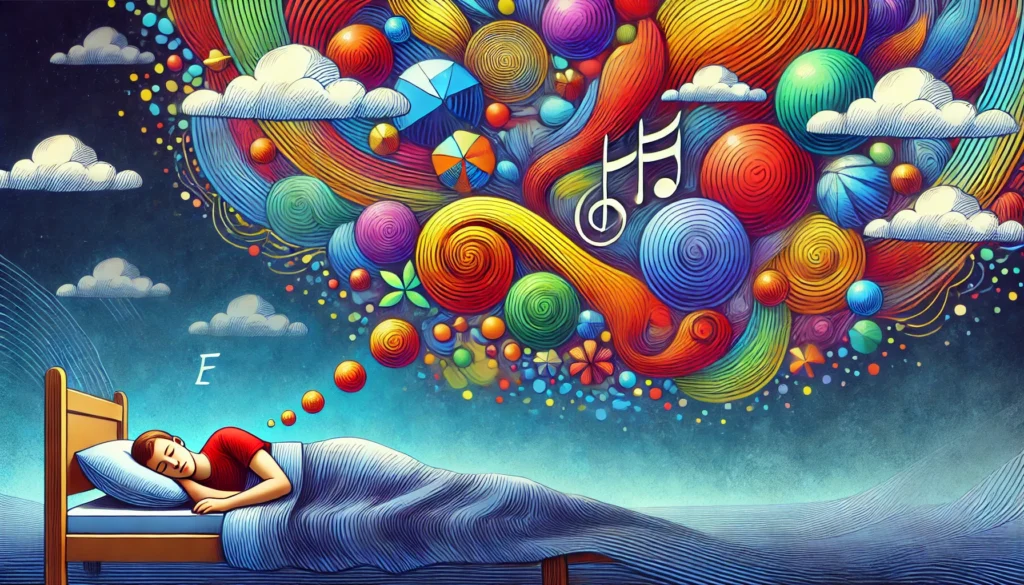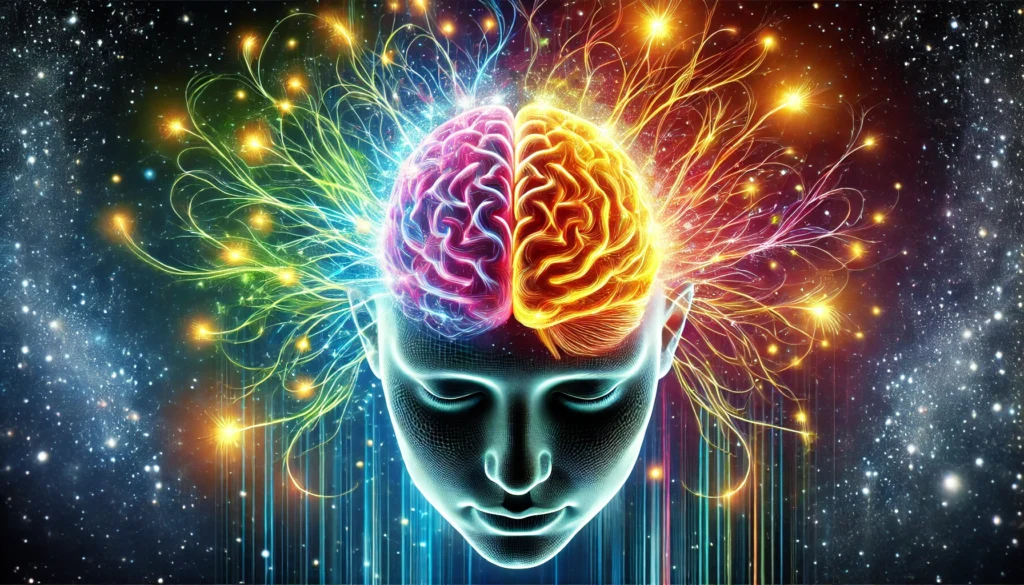Dreams have fascinated humanity for centuries, serving as a window into our subconscious and a reflection of our waking lives. But when do dreams happen? The connection between sleep stages and dreaming offers profound insights into cognitive processes, emotional health, and overall focus. Understanding the relationship between sleep and dreams can illuminate how different phases of sleep influence our ability to concentrate and perform at our best. By examining questions like “do you only dream in REM?” and “is dreaming a sign of deep sleep?” we can uncover the critical role dreams play in mental restoration and productivity.
You May Also Like: Why Do We Sleep? Exploring the Importance of Rest for Optimal Focus and Performance
The Architecture of Sleep: Stages and Cycles
Sleep is a highly structured process comprising several stages that repeat in cycles throughout the night. Each stage serves unique physiological and neurological functions, collectively contributing to overall rest and restoration.
Stage 1: Light Sleep
Stage 1 marks the transition from wakefulness to sleep. It is a light phase characterized by slowing brain waves and reduced muscle activity. Although brief, this stage sets the foundation for deeper sleep. Dreams are uncommon during this stage, but fleeting visual imagery may occur as the brain winds down.
Stage 2: Stabilizing Sleep
Stage 2 represents the longest phase of the sleep cycle. The brain produces sleep spindles and K-complexes, which help shield sleep from external disturbances. While vivid dreaming is rare, some mental processing occurs during this stage, laying the groundwork for memory consolidation and learning.
Stage 3: Deep Sleep
Stage 3, also known as slow-wave sleep (SWS), is dominated by delta brain waves. This is the most restorative phase, crucial for physical recovery and immune function. But can you dream in deep sleep? While dreams in this stage are infrequent and less vivid than those in REM sleep, they can be highly symbolic and tied to emotional processing.
REM Sleep: The Dreaming Stage
Rapid eye movement (REM) sleep is the crown jewel of the sleep cycle. During this phase, brain activity resembles wakefulness, with high-frequency beta waves dominating. REM sleep is when the most vivid and elaborate dreams occur, making it the primary stage for emotional integration and problem-solving. Understanding “do you only dream in REM?” underscores the significance of this stage in cognitive and emotional health.
When Do Dreams Happen?
Dreams occur during various stages of sleep, but their frequency and vividness depend on the stage. Most dreams are associated with REM sleep, which comprises about 20-25% of total sleep time. However, dreaming is not exclusive to REM sleep. Non-REM (NREM) dreams, though less vivid, contribute to emotional processing and cognitive repair.
REM Dreams
REM dreams are typically elaborate, colorful, and emotionally charged. They often involve narrative-like structures, reflecting the brain’s efforts to integrate memories and experiences. Research confirms that the majority of dreaming occurs in this stage, answering the question, “When do dreams happen?”
NREM Dreams
NREM dreams, especially those in Stage 3, are less vivid and more conceptual. These dreams often involve abstract ideas or problem-solving scenarios, highlighting the brain’s restorative functions. This raises intriguing questions such as, “Is dreaming a sign of deep sleep?” While dreaming can occur in deep sleep, it is more subdued compared to REM sleep.
The Science of Dreaming: Neural and Cognitive Perspectives
Dreaming is a complex neurological process involving multiple brain regions and neurotransmitters. The interplay between these components determines the quality and content of dreams, influencing how they contribute to focus and emotional health.
1. Brain Activity During Dreams
Dreaming activates regions such as the prefrontal cortex, hippocampus, and amygdala. These areas govern memory consolidation, emotional regulation, and cognitive integration. REM sleep, with its heightened neural activity, is particularly critical for processing intense emotions and fostering creativity.
2. Neurotransmitters and Dreaming
Acetylcholine levels peak during REM sleep, driving the vivid imagery and narrative complexity of dreams. Meanwhile, serotonin and norepinephrine remain suppressed, allowing the brain to explore unfiltered emotional and creative realms. This unique neurochemical environment underscores the question, “Do you only dream in REM?”
3. Memory and Emotional Processing
Dreams play a pivotal role in memory consolidation and emotional regulation. By replaying and reinterpreting experiences, the brain strengthens neural connections and resolves unresolved emotions. This process directly impacts focus and mental clarity during waking hours.

Do You Only Dream in REM? Debunking Myths
While REM sleep is the primary stage for vivid dreaming, it is not the sole arena for dreams. Research shows that dreams can occur during NREM sleep, particularly in Stage 3. These dreams, though less vivid, are equally significant for cognitive and emotional health.
REM Dreams vs. NREM Dreams
REM dreams are narrative-rich and visually intense, reflecting the brain’s heightened activity. In contrast, NREM dreams are more abstract and thought-like, focusing on problem-solving and emotional processing. Together, these dreams create a comprehensive system for mental restoration.
Is Dreaming a Sign of Deep Sleep?
Dreaming in deep sleep is rare but meaningful. While REM dreams dominate, deep sleep dreams often address unresolved emotions and stressors. The presence of dreams in this stage underscores the multifaceted nature of sleep and its impact on mental health.
Deep Sleep’s Role in Dreaming
Deep sleep facilitates physical recovery and immune function. The delta waves in this stage promote a calm neural environment, allowing the brain to address subconscious concerns. While not as vivid as REM dreams, deep sleep dreams contribute to emotional resilience and cognitive repair.
How Dreams Influence Focus and Productivity
Dreams are more than fleeting mental imagery; they are integral to mental performance and well-being. By understanding their role in focus and productivity, we can harness the power of sleep to optimize our waking lives.
1. Enhancing Creativity
REM dreams stimulate creativity by connecting disparate ideas and exploring novel scenarios. This process enhances problem-solving and innovation, key components of productivity.
2. Resolving Emotional Stress
Dreams act as a “nightly therapist,” helping the brain process and resolve emotional stress. By alleviating mental burdens, dreams improve focus and emotional stability.
3. Strengthening Memory
Dreaming reinforces neural connections, solidifying memories and integrating new knowledge. This process is vital for learning and retaining information, directly impacting productivity.
Optimizing Sleep for Better Dreaming
Improving sleep quality enhances dreaming, unlocking its full potential for mental restoration. The following strategies can help optimize sleep stages and dream quality:
1. Maintain a Regular Sleep Schedule
Consistency reinforces the circadian rhythm, ensuring smooth transitions through sleep stages and promoting vivid dreaming.
2. Create a Dream-Friendly Environment
A dark, quiet, and comfortable bedroom fosters deep sleep and REM cycles. Reducing noise and light exposure enhances the brain’s ability to produce vivid dreams.
3. Incorporate Relaxation Techniques
Meditation and mindfulness calm the mind, preparing it for restorative sleep and meaningful dreams.
4. Monitor Sleep Quality
Sleep trackers provide insights into sleep stages and dream patterns, helping identify areas for improvement.
The Future of Dream Research
As technology and neuroscience advance, our understanding of dreams continues to grow. Researchers are exploring innovative methods to decode dream content and enhance their restorative potential:
- Dream Recording Devices: Emerging technologies aim to capture and interpret dream imagery, offering new insights into subconscious processes.
- Targeted Stimulation: Techniques to stimulate specific brain regions during sleep may enhance dream vividness and cognitive benefits.
- Personalized Sleep Interventions: Tailored approaches to optimize sleep stages and dreaming promise to revolutionize mental health and productivity.

Conclusion: Harnessing Dreams for a Focused Mind
Dreams are an extraordinary byproduct of sleep, bridging the subconscious and conscious mind. By understanding when dreams happen and their connection to sleep stages, we can unlock their full potential for enhancing focus and emotional well-being. Whether exploring “can you dream in deep sleep?” or unraveling the mysteries of REM dreams, the insights gained underscore the critical role dreams play in shaping our waking lives. Embrace the power of dreams—your mind will thank you.
Further Reading:
Sleep Foundation: REM Sleep: What It Is and Why It’s Important
Verywell Mind: Can a Better Night’s Sleep Boost Your Memory?
Verywell Health: REM Sleep: What Happens in This Sleep Stage
New York Post: This stage of sleep is crucial for preventing Alzheimer’s: new study
Important Note: The information contained in this article is for general informational purposes only, and should not be construed as health or medical advice, nor is it intended to diagnose, prevent, treat, or cure any disease or health condition. Before embarking on any diet, fitness regimen, or program of nutritional supplementation, it is advisable to consult your healthcare professional in order to determine its safety and probable efficacy in terms of your individual state of health.
Regarding Nutritional Supplements Or Other Non-Prescription Health Products: If any nutritional supplements or other non-prescription health products are mentioned in the foregoing article, any claims or statements made about them have not been evaluated by the U.S. Food and Drug Administration, and such nutritional supplements or other health products are not intended to diagnose, treat, cure, or prevent any disease.


